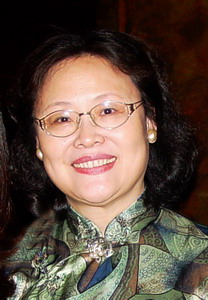Profiles
Curing cancer one zap at a time
By Cheng Yingqi (China Daily)
Updated: 2010-07-15 09:03
 |
Large Medium Small |
BEIJING - When he was diagnosed with liver cancer eight years ago, Eric Zhang thought his dream of studying in the United States was over.
Then a fresh graduate from a university in Beijing, Zhang, now 32, had landed a promising position in a company, but he lost the job soon after the company learned of his disease.
|
 Chen Minhua, an expert on liver cancer treatment. [PROVIDED TO CHINA DAILY] |
In China, which has the world's highest incidence rate of liver cancer, people think liver cancer means death. Every year, more than 120,000 Chinese people die of the disease, accounting for 44 percent of the world total.
Zhang was almost prepared for the same fate until he met Chen Minhua, a 64-year-old doctor who has spent 30 years working on cancer diagnosis and intervention using ultrasound.
Zhang improved dramatically after receiving a treatment called radiofrequency ablation. The treatment starts with the insertion of a needle into the exact area of the tumor using ultrasound imaging; then a generator delivers a high-frequency electronic current to the local tumor tissue, which raises the temperature to as high as 100 C, destroying the tumor cells.
Six months after his treatment, Zhang fully recovered and has experienced no relapses so far.
Since the 1990s, the therapy has been adopted extensively by medical experts around the world, but it is mostly restricted to tumors with a diameter less than 3 cm.
However, the majority of patients in China have liver tumors with diameters more than 3 cm when they are first diagnosed, and 60 percent of them are not suitable for surgery.
Since 1999, Chen and her team, who pioneered the application of the therapy in China, have been exploring optimal treatment protocols and strategies for large liver tumors.
By 2002, the team had achieved a success rate of 90 percent for the treatment of patients with tumors between 3 and 6 cm, winning extensive acclaim from international counterparts.
Compared to traditional surgery, radiofrequency ablation can be used frequently as it causes little trauma to the patient. This is especially desirable for the treatment of liver cancer as it relapses easily. The therapy also has a big advantage over surgery when tumors are located in the central part of a liver and surgically removing them is too dangerous to perform, according to Chen.
"It has few side effects," Chen said. Out of her more than 1,200 patients over the past decade, only 3.1 percent had complications.
For Chen, Zhang's story is about the ideal - early diagnosis of the tumor when radiofrequency ablation works best.
But the reality is quite different. Thanks to the development of ultrasonic diagnostic techniques, to which Chen has made major contributions, early diagnosis of tumors has been possible since the mid-1980s. Zhang is one typical example, who was diagnosed with liver cancer in its primary stage during a regular physical check. But for the majority of the Chinese population, especially those in the rural areas, regular physical checks are still uncommon, Chen said.
To make matters worse, even for those who have been diagnosed with liver tumors, they have little access to radiofrequency ablation therapy.
"Few hospitals are willing to provide the therapy," Chen said.
Chen admits that the therapy demands high skills, but that's not the main reason.
"The Chinese health authority fixes the price of radiofrequency ablation treatment at 1,400 yuan ($210) a session, much less than other treatment methods," Chen said. "So the promotion of the treatment is running up against considerable opposition in hospitals."
Chen said even some of her own students do not have any interest in using the treatment.
Chen hopes that an increasing awareness of the therapy's effectiveness among professionals and the public might help change the situation.
"The therapy is relatively new, based on ultrasound guidance and radiofrequency devices and techniques," the doctor said. "As people are used to using radiofrequency only for complementary treatment, that mindset remains even though the therapy has now proved to be as effective as traditional surgery."
Chen hopes to change traditional opinions and promote the standardized application of this new treatment in China.
She works 16 hours a day promoting and spreading the therapy. She works in hospital, teaches in universities, runs forums and writes for books and journals.
"All I'm concerned about is solving problems for the patients," she said. "I found a problem and I created a solution. I hope more people can learn about the solution so they can benefit from it."